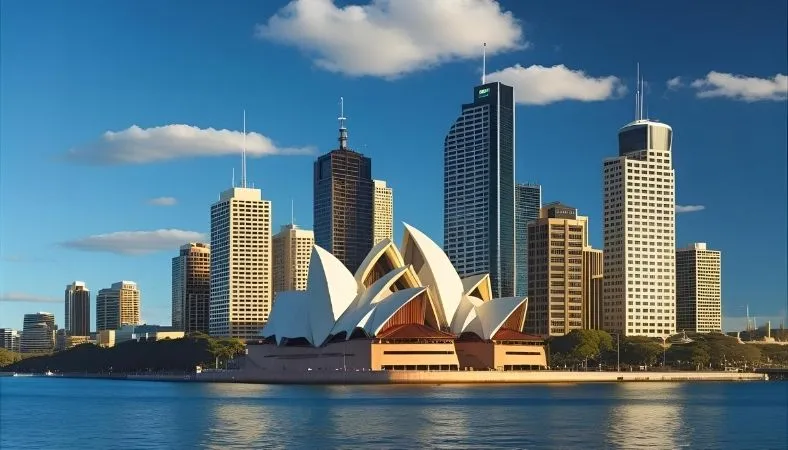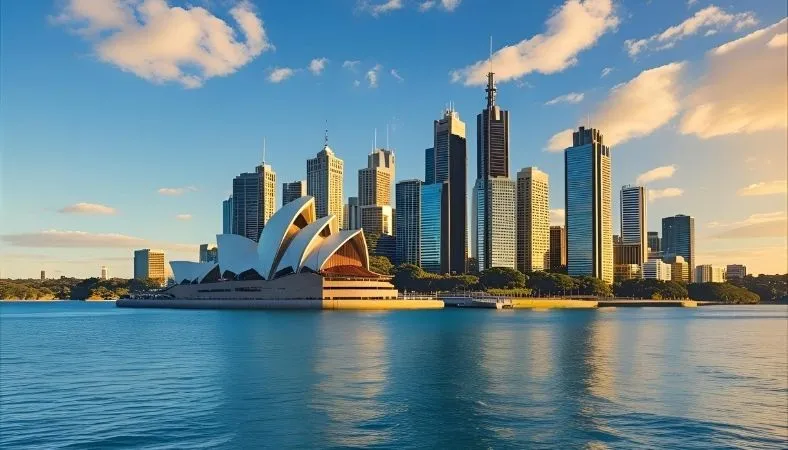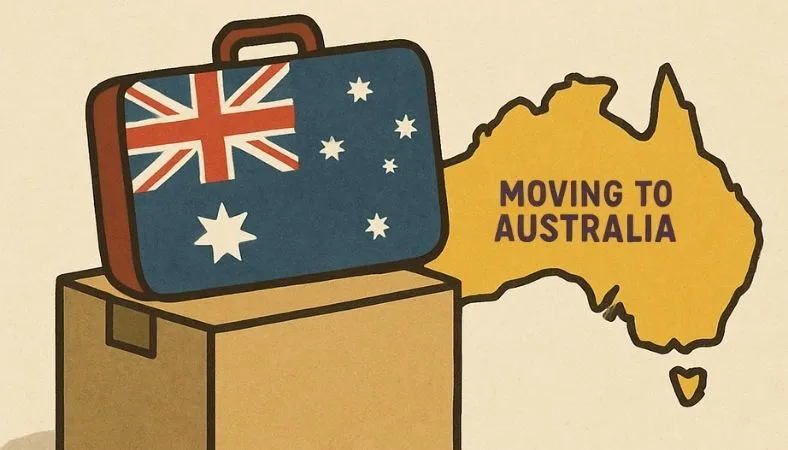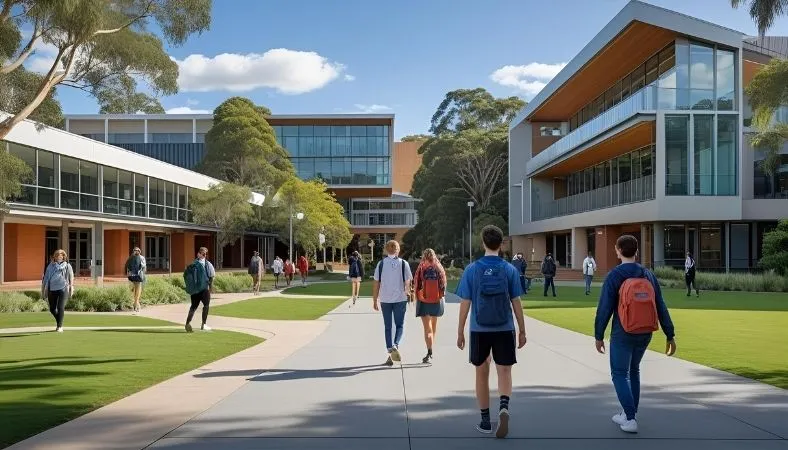Key Takeaways
- Skilled visas are your ticket if you’ve got in-demand jobs like coding or nursing—think of it as Australia scouting talent with a points system.
- Australia’s welcoming 31.5% overseas-born population, but migration’s down to 340,800 in 2024, so competition’s tight.
- Partner visas cost $8,850 AUD and take up to two years, so plan early if moving with your Aussie love.
- City rents hit $900/week, but the US-AU tax treaty saves you from double taxes.
- New 2025 rules, like the Skills in Demand visa, open doors for pros but demand prep.
- Australia moving costs: Budget for visa, travel, and living expenses to ensure a smooth transition.
how to move to australia from usa?
Picking a visa is like choosing a college—you need the right fit for your skills, goals, or relationships. Here’s a rundown of your best options as a US citizen, with real stories to show how they work.
Skilled Independent Visa (189)
This visa’s Australia’s golden ticket for go-getters. If you’re under 45 and your job—like software engineering or teaching—is on their “most wanted” list, you can score permanent residency without a sponsor. Sarah, a nurse from Texas, hit 80 points with her experience and landed in Melbourne in eight months. Fees start at $4,640
Expert tip: Check the Skilled Occupation List on Home Affairs to match your job.
Employer Sponsored Visa (482)
Got a job offer? This temporary visa lets you work for an Australian company, often a stepping stone to staying forever. Picture Alex, a Chicago accountant, hired by a Sydney firm—he moved in six months. Costs are $3,035 AUD, plus health checks.
Try this: Network on Seek.au to land that offer first.
Partner Visa (820/801)
If your heart’s with an Australian, this visa’s for you. It starts temporary, goes permanent after two years, but costs $8,850 AUD and takes 12-24 months. A friend from Denver applied onshore after marrying her Aussie partner, using shared lease papers as proof.
Heads-up: Gather joint bank statements early to speed things up.
Working Holiday Visa (417/462)
Under 35 and want to test the waters? This lets you work and travel for a year, with chances to extend. It’s $635 AUD, but 2025 uses a ballot, so apply in June. Jake from Florida worked vineyards and stayed two years. Quick win: Unlike tourist ETAs, this gives you real job options.
Are You Eligible?
Australia’s picky, like a coach picking a team. They check your age, skills, and health to see if you make the cut.
Age and Skills Check
Skilled visas favor those under 45 with jobs Australia needs. Your skills get tested by groups like VETASSESS—49,000 skilled workers arrived in 2023-24, so demand’s high.
Do this: Start your skills assessment now; it can take weeks.
English and Health Rules
You’ll need an IELTS score of 6 or better, plus a health exam. Serious conditions might block you, though waivers exist for disabilities. Think of it as a pre-game physical. Stay sharp: Check Home Affairs’ monthly updates for processing times.
Points System 101
Points come from age (max 30 if 25-32), experience (up to 20 for eight years), and degrees. Unlike US green cards, Australia bets big on skills over family ties at first. Boost your score: Add certifications to hit the 65-point minimum.
Your Step-by-Step Move
With your visa picked, it’s time to make it happen. Think of this as building a house—one step at a time.
Step 1: Research and EOI
File an Expression of Interest on SkillSelect—it’s free but competitive. Invitations depend on job demand. For 2025, watch for ballot updates. Smart move: Keep your EOI updated to stand out.
Step 2: Apply and Wait
Submit your visa app online with docs and biometrics. Migrant arrivals fell 10% to 667,000 in 2023-24, so spots are tight.
A US teacher I know got her 189 visa in seven months after a strong EOI. Be patient: Track status on Home Affairs.
Step 3: Prep for the Jump
Book flights, ship belongings, and sort pets (quarantine’s strict). High rents—$900/week—hit hard, so scout on realestate.com.au. Save time: Australia’s process is quicker than US immigration, but health checks are stricter.
Budgeting for Australia
Budgeting separates dreamers from doers. Australia’s pricey, but smart planning keeps you ahead.
Visa and Moving Costs
Skilled visas cost $4,640 AUD; add $200 for biometrics. A family move? Budget $10,000-20,000 USD with flights.
Tax saver: The US-AU treaty means you won’t pay taxes twice.
Everyday Expenses
City homes average $1M AUD, and daycare’s $2,500-3,000 monthly. With 27.4 million people in 2024, housing’s tight.
A single person spends $1,000 monthly on basics.
Hack: Try regional towns for cheaper rent.
Money-Saving Tips
Save for three months upfront. Curious about partner visa costs? They include extras like document translations. A family of four I heard about budgeted $50,000 USD, settling in affordable Adelaide.
Plan ahead: Use cost-of-living calculators online.
Challenges You’ll Face
Moving’s not all smooth sailing—here’s what might catch you off guard.
 Paperwork Pains
Paperwork Pains
Visas can take 2-3 years, and mistakes cost time. In 2023-24, 221,000 left Australia, some fed up with delays.
Fix it: Hire a MARA-registered agent for guidance.
Adjusting to Aussie Life
Missing home is real—expat forums like Reddit buzz with stories of loneliness. Rules like no jaywalking feel strict compared to the US. Education standards might surprise you, though healthcare’s a win. Connect: Join expat groups for support.
Housing Squeeze
Cities like Melbourne face housing crunches—31.5% of Aussies are overseas-born, pushing demand.
A US couple moved to Tasmania for half the rent. Go regional: Smaller towns ease the budget.
Settling In for Good
You’ve landed—now make Australia home.
Jobs and Housing Hunt
Sydney’s job central, Melbourne’s artsy, Brisbane’s affordable. Network on LinkedIn for openings. Real talk: Reddit threads from Americans share raw tips on settling in.
Path to Citizenship
After four years as a permanent resident, take the citizenship test. Dual citizenship’s fine for Americans. A techie from Boston became a citizen in five years. Start strong: Pick a visa with PR potential.
Bringing Family or Pets
Pets need vaccines and $2,000+ for quarantine. Family visas ease moves with kids. Pet tip: Check AQIS rules early to avoid surprises.
What’s New in 2025

Australia’s migration scene is shifting—here’s the latest.
Migration Stats
Net migration’s down to 340,800 in 2024, with 5,700 Americans among them.
Population hit 27.2 million mid-2024.
Why it matters: Fewer spots mean sharper planning.
Policy Updates
New Skills in Demand visa targets key jobs in 2025. Student visa rules tightened, and English tests got harder. Stay updated: Check Home Affairs for ballot dates.
Outlook for Americans
Skills shortages keep opportunities alive. Western Australia’s growing fast for migrants. Look ahead: Focus on in-demand fields like AI or healthcare.
Quick Reality Check
- Spiders? Yep, they’re bigger—keep calm, most aren’t deadly.
- Healthcare? Free for residents, not tourists—get private cover early.
- Slang? “Arvo” (afternoon) and “mate” are everywhere—embrace it.
- Driving? Left side, strict rules—fines for small slip-ups are real.
Frequently Asked Questions
How long to get Australian citizenship from USA?
After four years as a permanent resident, you can apply for citizenship. Pass a test on Aussie history and values, plus meet character and residency rules. Processing takes 12-18 months. Choose a visa like the 189 for PR eligibility. Dual citizenship lets you keep your US passport.
What are challenges moving to Australia in 2025?
Expect $900/week rents, $8,000+ visas, and long waits. Homesickness and strict rules (like no jaywalking) hit hard. Use MARA agents, budget extra, and join expat forums. Some leave due to costs—8% more departures in 2023-24—but planning helps you stay.
Best cities for Americans in Australia?
Sydney’s got jobs and beaches, Melbourne’s artsy vibe shines, Brisbane’s warm and budget-friendly. Match your style—Sydney for hustle, Brisbane for savings. Costs vary: Brisbane’s rents are 20% lower than Sydney’s. Americans love the familiar yet chill feel.
Impact of health issues on Australia visas?
Health exams are mandatory; serious issues might block you unless waived for skills or family. Disabilities face “eugenics-exempt” checks. Get assessed early with medical proof. Home Affairs reviews case-by-case—minor conditions usually pass with documentation.
Can Americans work in Australia without sponsorship?
Yes, with a working holiday visa (under 35) or skilled independent visa if you score enough points. Most need job offers for sponsored visas. Holiday visas allow casual work, extendable regionally. Competition’s high in 2025, so apply early.
Tax implications for Americans in Australia 2025?
The US-AU treaty prevents double taxation—Australia taxes residents fully, but US credits apply. Report foreign accounts over $10k to the IRS via FBAR. You might exclude up to $120k USD in earnings. Consult a tax pro to dodge penalties and save cash.
Your Aussie dream’s within reach. Start with Home Affairs’ visa finder, grab a coffee, and plan your move like a pro. You’ve got this!
Related Article: Cost of Moving to Australia: Key Expenses Explained


 Paperwork Pains
Paperwork Pains
